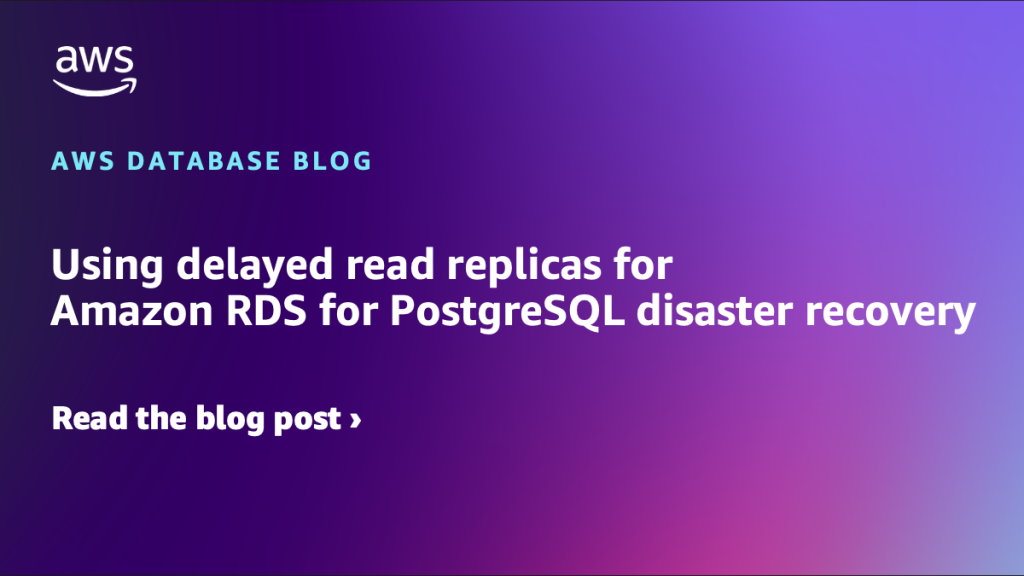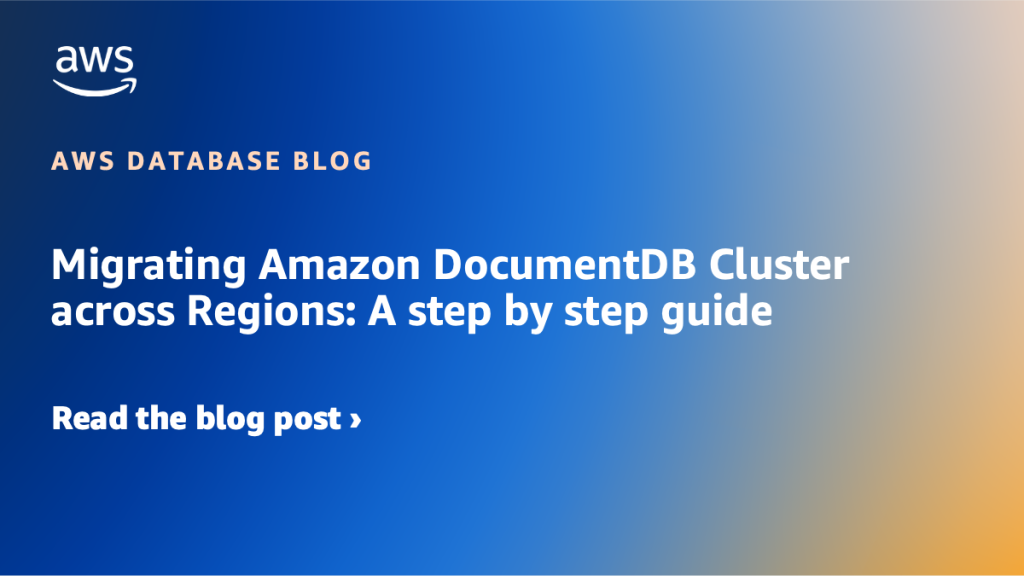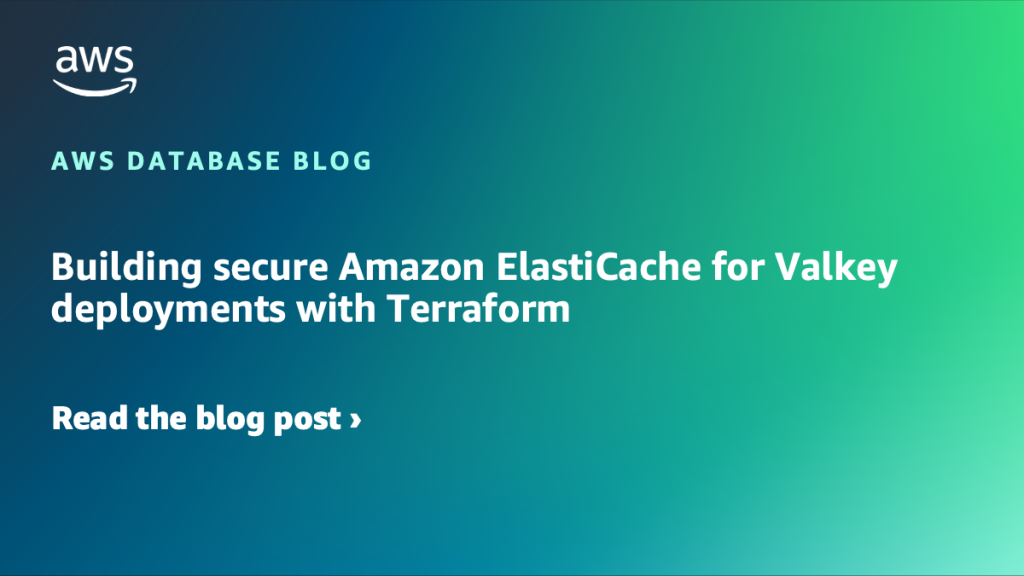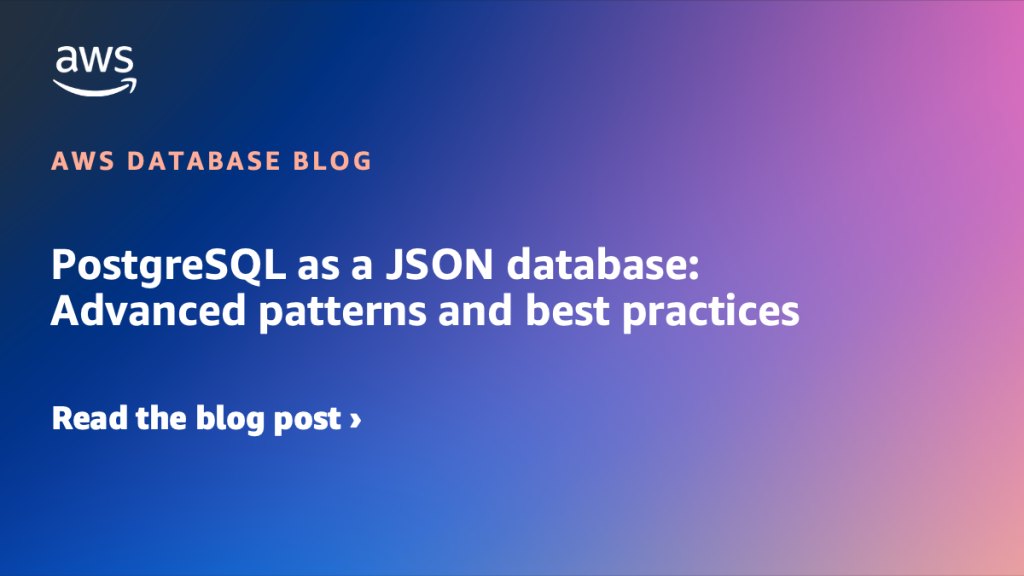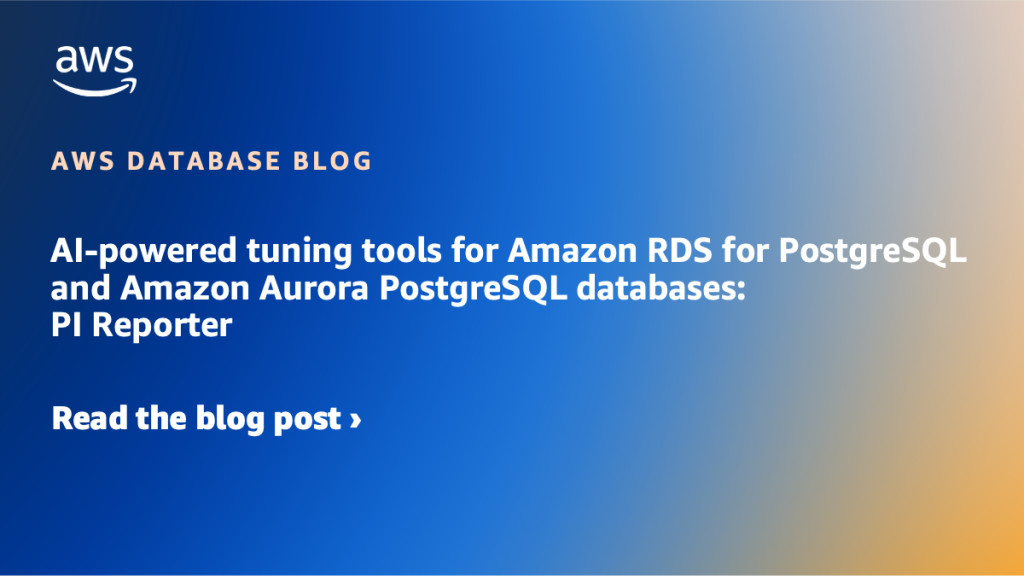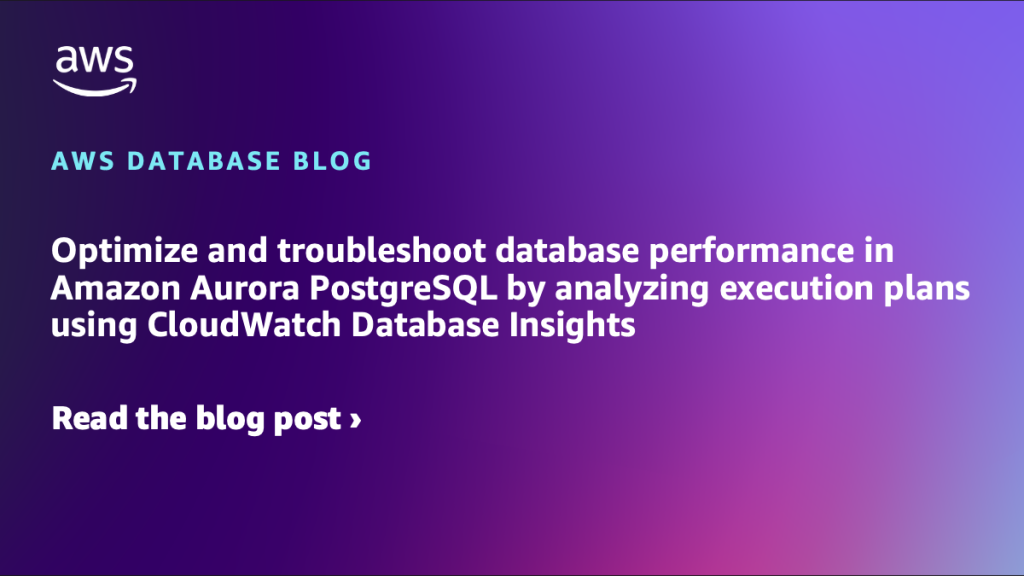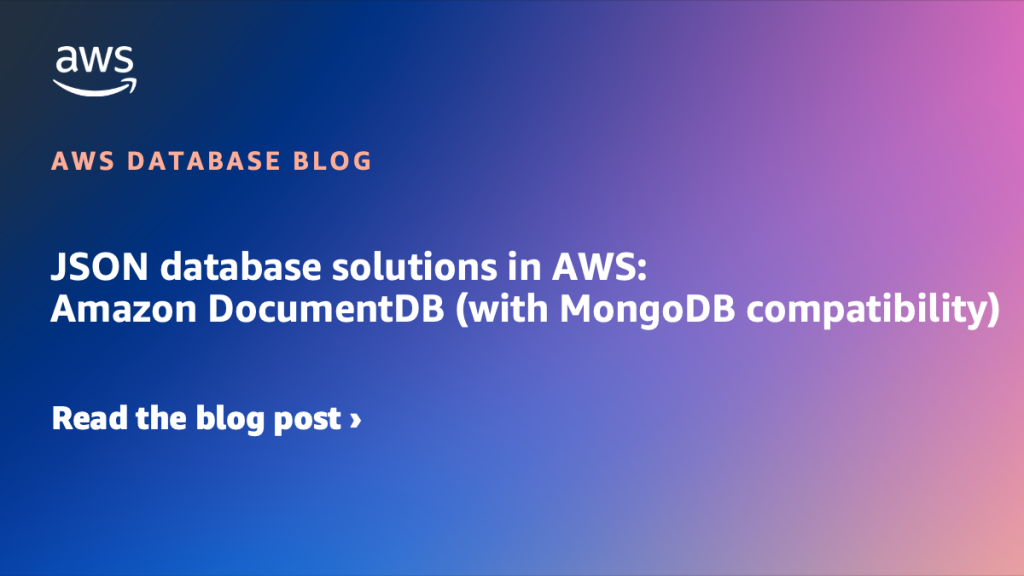AWS Database Blog
Category: Advanced (300)
Introducing fully managed Blue/Green deployments for Amazon Aurora Global Database
Today, we’re introducing Amazon RDS Blue/Green support for Aurora Global Database, enabling database upgrades and modifications with minimal downtime. With just a few steps, you can create a blue/green deployment that establishes a fully managed staging (green) environment mirroring the existing production (blue) environment, including the primary and its associated secondary regions of the Global Database.
Using delayed read replicas for Amazon RDS for PostgreSQL disaster recovery
In this post, we explore the use cases for delayed replication, the recovery procedures, and best practices for managing delayed replicas to help ensure your database recovery strategy is both robust and efficient.
Migrating Amazon DocumentDB Cluster across Regions: A step by step guide
In this post, you will learn to migrate a regional Amazon DocumentDB cluster from one AWS Region to another using the Global Cluster feature with low downtime and without performance impact.
How Zepto scales to millions of orders per day using Amazon DynamoDB
In this post, we describe how Zepto transformed its data infrastructure from a centralized relational database to a distributed system for select use cases. We discuss the challenges encountered with Zepto’s original architecture to support the business scale, the shift towards using key-value storage for cases where eventual consistency was acceptable, and Zepto’s adoption of Amazon DynamoDB.
Building secure Amazon ElastiCache for Valkey deployments with Terraform
In this post we show you how to build a secure Amazon ElastiCache for Valkey cluster using Terraform, implementing best practices and comprehensive security controls including encryption, authentication, and network isolation.
PostgreSQL as a JSON database: Advanced patterns and best practices
This post shows you how to use PostgreSQL to store and search JSON data effectively. You’ll learn when to use JSON versus JSONB, how to create the right indexes, and how to write queries that perform well at scale.
AI-powered tuning tools for Amazon RDS for PostgreSQL and Amazon Aurora PostgreSQL databases: PI Reporter
In this post, we explore an artificial intelligence and machine learning (AI/ML)-powered database monitoring tool for PostgreSQL, using a self-managed or managed database service such as Amazon RDS for PostgreSQL and Amazon Aurora PostgreSQL.
Optimize and troubleshoot database performance in Amazon Aurora PostgreSQL by analyzing execution plans using CloudWatch Database Insights
In this post, we demonstrate how you can use Amazon CloudWatch Database Insights to analyze your SQL execution plan to troubleshoot and optimize your SQL query performance in an Aurora PostgreSQL cluster.
GroundTruth reduces costs by 45% and improves reliability migrating from Aerospike to Amazon ElastiCache for Valkey
GroundTruth, an advertising platform leading the way in location- and behavior-based marketing, empowers brands to connect with consumers through real-world behavioral data to drive real business results. As our advertising platform scaled to process increased volume of ad requests and third-party segment ingestion, maintaining our Aerospike-based caching infrastructure introduced significant operational complexity and rising costs, while also compromising performance and limiting our ability to scale efficiently. To meet our requirements we implemented Amazon ElastiCache for Valkey, which streamlined our operations, improved reliability, and reduced costs. In this post, we walk through our migration journey, covering the migration strategy we adopted, the optimizations we made to reduce cost by 45%, reliability improvements including reducing write failures by 20x, and operational gains from managed service capabilities.
JSON database solutions in AWS: Amazon DocumentDB (with MongoDB compatibility)
JSON has become the standard data exchange protocol in modern applications. Its human-readable format, hierarchical structure, and schema flexibility make it ideal for representing complex, evolving data models. As applications grow more sophisticated, traditional relational databases often struggle with several challenges: Rigid schemas that resist frequent changes Complex joins for hierarchical data Performance bottlenecks when […]

